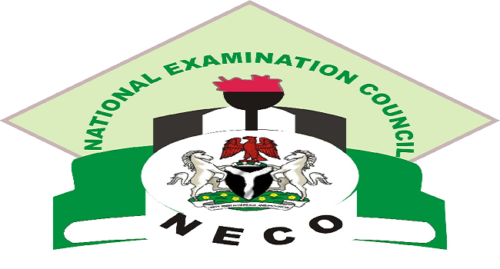Maths Keypoints: Number Bases; In mathematics, a number base or numeral system is a system of representing numbers using a set of digits or symbols. The most commonly used number system is the decimal system, which is based on ten digits: 0, 1, 2, 3, 4, 5, 6, 7, 8, and 9. However, other number bases are also used, such as binary (base 2), octal (base 8), and hexadecimal (base 16).
Study other Keypoints here
Converting Between Number Bases:
To convert a number from one base to another, you need to follow these steps:
- Write the number in the given base.
- Divide the number by the base you want to convert to.
- Write down the remainder.
- Divide the quotient by the base you want to convert to.
- Repeat steps 3 and 4 until the quotient is zero.
- The converted number is the remainder written in reverse order.
For example, let’s convert the binary number 1011 to decimal:
- Write the number in binary: 1011
- Divide by 10 (decimal equivalent of binary): 1011 ÷ 10 = 101 with a remainder of 1
- Write down the remainder: 1
- Divide the quotient by 10: 101 ÷ 10 = 10 with a remainder of 1
- Write down the remainder: 1
- Divide the quotient by 10: 10 ÷ 10 = 1 with a remainder of 0
- Write down the remainder: 0
- Divide the quotient by 10: 1 ÷ 10 = 0 with a remainder of 1
- Write down the remainder: 1
The remainders in reverse order are 1101, so 1011 (binary) = 13 (decimal).
Binary to Octal and Hexadecimal:
Binary numbers can also be converted to octal and hexadecimal by grouping the binary digits into sets of three (octal) or four (hexadecimal), and then converting each group to the corresponding octal or hexadecimal digit. For example, let’s convert the binary number 1101101 to hexadecimal:
- Group the binary digits into sets of four: 1101 1010
- Convert each group to its hexadecimal equivalent: 1101 = D 1010 = A
- The final result is DA (hexadecimal)
Binary Addition and Subtraction:
Binary addition and subtraction are performed using the same principles as decimal addition and subtraction. Here are some examples:
- 1011 (binary) + 1100 (binary) = 10111 (binary)
- 1100 (binary) – 1011 (binary) = 1 (binary)
Binary Multiplication:
Binary multiplication is performed using the same principles as decimal multiplication, except that you use only the digits 0 and 1. Here’s an example:
- 1101 (binary) x 101 (binary) = 1101 101xyamlCopy code
11010000x 1101xx1110001 (binary)
Octal and Hexadecimal Addition and Subtraction:
Octal and hexadecimal addition and subtraction are performed using the same principles as decimal addition and subtraction. The only difference is that you use the digits of the given base. Here are some examples:
- 27 (octal) + 16 (octal) = 43 (octal)
- 5B (hexadecimal) – 27 (hexadecimal) = 34 (hexadecimal)
Operations in Different Number Bases:
To perform operations in different number bases, you need to first convert the numbers to the same base, then perform the operation, and finally convert the result back to the original base. Here are some examples:
- 1011 (binary) + 1100 (binary) = 10111 (binary)
- 1100 (binary) x 101 (binary) = 111000 (binary)
- 27 (octal) – 16 (octal) = 13 (octal)
- 5B (hexadecimal) + A1 (hexadecimal) = FB (hexadecimal)
Conversion from One Base to Another Including Fractional Parts:
Converting a number from one base to another with a fractional part involves two separate conversions: one for the integer part and one for the fractional part. Here are the steps:
- Convert the integer part of the number to the new base using the method outlined above.
- Multiply the fractional part by the new base.
- Write down the integer part of the result.
- Repeat steps 2 and 3 with the fractional part until you have as many digits as needed.
For example, let’s convert the binary number 101.11 to decimal:
- Convert the integer part: 101 (binary) = 5 (decimal)
- Multiply the fractional part by 10 (the decimal equivalent of 2): 0.11 (binary) x 10 = 1.10
- Write down the integer part: 1
- Repeat steps 2 and 3 with the remaining fractional part: 0.10 (binary) x 10 = 1.00
- The final result is 5.75 (decimal)
Examples
Convert the base 10 number, 34810, to base 5.
This is a conversion that we have done in a previous example. The powers of five are:
50 = 1
51 = 5
52 = 25
53 = 125
54 = 625
Etc…
The highest power of five that will go into 348 at least once is 53.
We divide by 125 and then proceed.

Keeping all the whole number parts, from the top to bottom, gives 2343 as our base 5 number. Thus, 23435 = 34810.
Example 2
Convert the base 10 number, 300710, to base 5.
The highest power of 5 that divides at least once into 3007 is 54 = 625. Thus, we have:
3007 ÷ 625 = ④.8112
0.8112 × 5 = ④.056
0.056 × 5 = ⓪.28
0.28 × 5 = ①0.4
0.4 × 5 = ②0.0
This gives us that 300710 = 440125. Notice that in the third line multiplying by 5 gave us 0 for our whole number part. We don’t discard that! The zero tells us that zero is in that place. That is, there are no 52s in this number.
Conclusion:
Number bases are an important concept in mathematics that have many practical applications. Understanding how to perform operations and conversions in different number bases is essential for solving problems in various fields such as computer science and engineering. By following the steps outlined in this note, you should be able to perform these operations and conversions with ease.












